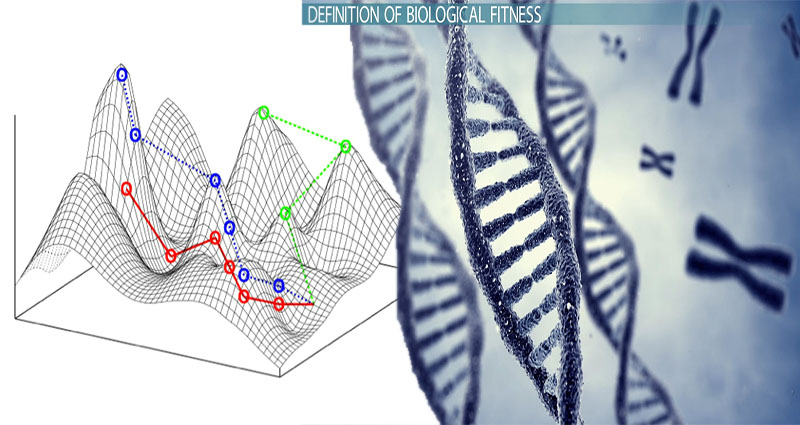Natural selection moves genes uphill. For example, an AATGCCG could become AAAGCTG or AAAGCCG. Sequences can change one site at a time, but evolution does not view the whole landscape at once. This can lead to populations getting stuck on an adaptive peak that does not represent the global adaptive peak. A rugged fitness landscape has many local optima, while a smooth fitness landscape has few. To understand the role of fitness landscapes in evolution, let’s look at a fitness landscape.
Evolution
The study of evolutionary biology focuses on the idea that fitness determines reproductive success. Fitness is the proportion of an individual’s genes that will be passed on to the next generation. Genetic differences in an organism’s fitness will affect the frequency of the genotype and make it more likely for it to survive and reproduce. This process is known as natural selection and is a fundamental principle of genetics. The theory behind fitness biology is that genes confer certain advantages to a species, and the fitness of an individual depends on a variety of factors, including the environment.
Adaptive landscape
Adaptive landscapes have provided valuable services to evolutionary biology over the last eighty years. These planar representations of fitness functions incorporate environmental change.
Adaptive landscapes can be applied to ecological processes, including sympatric speciation, divergence, and gene flow. Adaptive landscapes have been applied to a variety of problems in ecology, from population genetics to evolutionary biology. These tools can help scientists understand the origin and evolution of species.
Biological fitness
Using a simple model of the evolution of a species, one can understand how adaptation can drive population size and fitness. The fitness landscape model assumes that a population’s fitness is based on allele frequencies at two loci. However, this is a misleading model since environments can change, and real evolution will not resemble an uphill slope on a static landscape. A more complex model of population size and fitness involves many more loci.
Genetic variation
It’s no secret that genetic variation is one of the forces driving evolution. Variations in gene sequences allow different species to have a distinct advantage in one area or another. In fact, many species exhibit dramatic differences in their environment due to special genetic variations. Some species are even camouflaged due to special genetic variations, such as the Catalpa sphinx moth, which uses its textured wings to blend into tree bark. The human genome contains between twenty-five thousand genes, which are all related.
Reproductive success
Reproductive success refers to an individual’s ability to spread their genetic legacy to future generations. Success is measured by the number of fertile offspring an individual produces. This trait is crucial for evolution because every individual aims to pass on their genetic legacy.
Evolutionary strategies all aim to maximize reproductive success. So, reproductive success is not just a factor in fitness, it’s the key to the evolution of life on Earth.
Adaptive potential
Adaptive potential is a key concept in conservation genetics. The ability to respond to selective pressures via phenotypic or molecular changes is essential for preventing extinction due to maladaptation. High genetic diversity is thought to enhance adaptive potential in populations. Adaptability to environmental changes can therefore be enhanced by increased genetic diversity in populations. It may also be linked to population size. Inbreeding can reduce the fitness of populations, increasing the risk of extinction in changing environments.
Biological individuality
There is considerable controversy about the concept of biological individuality. While the concept may include both developmental and evolutionary individuals, it is not restricted to humans alone. Biological individuals also include organisms, developmental individuals, and nesting agents. This problem poses two important questions: what is a biological individual, and what does it mean for fitness biology? Both questions are important for understanding the evolution of organisms and their fitness in a changing environment.
Biological fitness as a phenotype
Biological fitness as a phenotyp is an important concept in evolution. It describes the evolution of phenotypic values within a population over time and is based on quantitative genetic principles. There are two major components to this concept: inheritance and relative fitness. Inheritance describes the fidelity with which ancestral phenotypes are transmitted to the descendent population. Generally, genes are regarded as the primary mechanism of inheritance.
Biological fitness as a summary statistic
Biological fitness is often used as a summary statistic in genetics. When populations of microbes are put in a novel environment, they must adapt via mutation to survive. Growth rate is an excellent proxy for total fitness. Growth rate experiments are relatively consistent and estimate the impact of substitutions on fitness. For bacteria, fitness rises rapidly at the start of an experiment and plateaus as the population approaches a new genotype.











